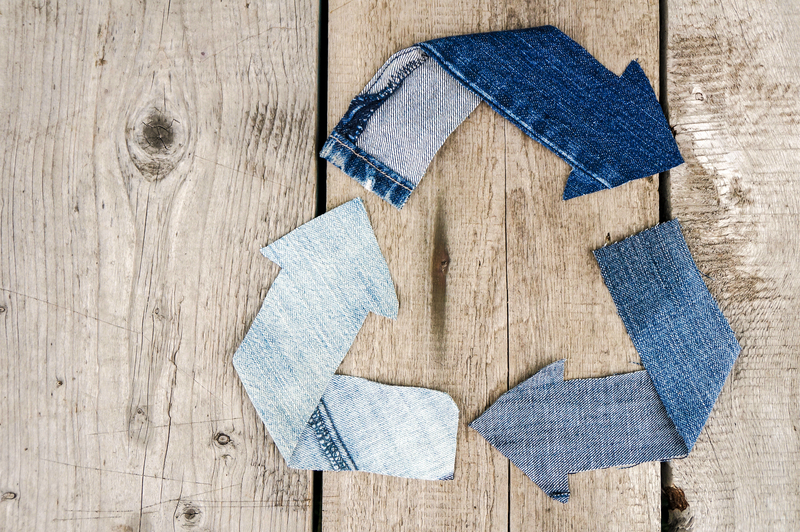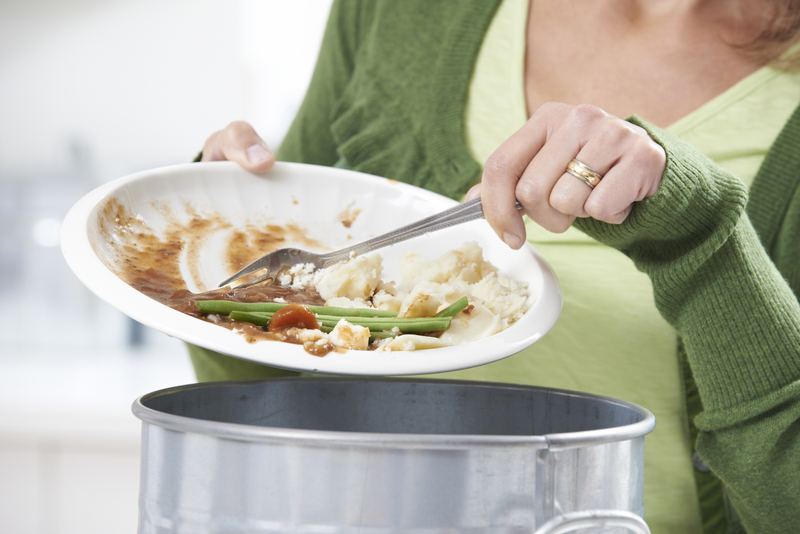Best Practices for Disposing of Personal Protective Equipment Waste Responsibly
The widespread use of Personal Protective Equipment (PPE) has become an essential part of our lives, especially since the onset of the COVID-19 pandemic. PPE--including masks, gloves, face shields, gowns, and more--plays a critical role in safeguarding both healthcare workers and the general public from the transmission of infectious diseases. However, the surge in demand and usage has resulted in another challenge: the responsible disposal of PPE waste. Improper disposal poses risks to human health and the environment. This comprehensive guide will explore the best practices for disposing of PPE waste responsibly, offer actionable steps, and highlight the importance of sustainable waste management.
Understanding PPE Waste: Types and Impacts
Before diving into disposal practices, it's important to understand what constitutes PPE waste and the environmental and health risks associated with improper disposal.
Types of PPE Waste
- Face Masks: Single-use surgical and disposable masks, as well as reusable cloth masks.
- Gloves: Disposable latex, nitrile, and vinyl gloves, and reusable work gloves.
- Face Shields and Goggles: Plastic face shields, goggles, and visors.
- Gowns and Aprons: Single-use medical gowns and aprons used in healthcare settings.
- Other PPE: Shoe covers, caps, and ear protectors.
Most of these items are made from non-biodegradable plastics, which can persist in the environment for hundreds of years if not disposed of responsibly.
Environmental and Health Risks of PPE Waste
- Microplastic Pollution: Discarded PPE can break down into microplastics, contaminating soil, water, and food chains.
- Harm to Wildlife: Animals can ingest or become entangled in improperly discarded PPE.
- Disease Transmission: Used PPE can harbor infectious agents, increasing the risk of disease transmission to waste handlers and the public.
- Visual Pollution: Littering of masks and gloves contributes to unsightly streets and natural environments.

General Principles of PPE Waste Disposal
When considering safe PPE disposal, it is crucial to integrate practices that protect public health while minimizing the ecological footprint. The following essential guidelines serve as the baseline for responsible PPE waste management:
- Segregate PPE Waste: Distinguish PPE from other waste streams to facilitate proper handling.
- Minimize Direct Contact: Always handle used PPE with caution and consider wearing gloves when managing large quantities.
- Use Secure Containers: Dispose of PPE in closed bins or bags to prevent accidental spread or littering.
- Follow Local Regulations: Adhere to your municipality's recommendations and waste management policies.
- Promote Awareness: Educate others about responsible PPE waste disposal practices for a collective community impact.
Best Practices for Disposing of Used PPE at Home
Step-by-Step Guide for Household PPE Disposal
- Designate a Bin: Use a specific bin or bag for PPE waste to avoid mixing with recyclables or compostables. If possible, use a pedal-operated bin to limit hand contact.
- Bag Used PPE: Place all used gloves, masks, and related items in a strong, leak-proof bag. Tie it securely before disposing of the bag in your general waste bin.
- Do Not Litter: Never dispose of PPE on streets, parking lots, or public spaces. Acts of littering directly harm the environment and pose health risks.
- Sanitize Hands Thoroughly: After disposing of PPE, always wash your hands or use an alcohol-based sanitizer.
- Do Not Flush PPE Items: Never attempt to flush masks, gloves, or other PPE down the toilet as this can clog plumbing and contribute to water pollution.
Disposal of Reusable PPE
- Wash Cloth Masks: Clean reusable masks regularly using hot water and detergent.
- Inspect for Damage: Dispose of any damaged reusable PPE in the general waste following the above-stated bagging and binning process.
Safe PPE Waste Disposal in Healthcare and Institutional Settings
Healthcare facilities and institutions generate a significant proportion of PPE waste. Thus, instituting strict protocols for PPE waste management is paramount.
Medical Waste Segregation and Collection
- Color-Coded Bins: Use international color codes (e.g., yellow bags for infectious waste) to sort PPE contaminated with bodily fluids or infectious material.
- Sharps and Biohazard Labels: PPE contaminated with blood and hazardous substances should be placed in biohazard-labeled bins.
- Separate Non-Contaminated PPE: Items not exposed to infectious agents may be disposed of in general waste, based on institutional policies.
Onsite Storage and Handling
- Secure Storage: Waste storage areas must restrict public access and offer protection from weather elements and pests.
- Handling Procedures: Only trained staff using appropriate PPE should handle, transport, and process waste within the facility.
Disposal Methods for Institutional PPE Waste
- High-Temperature Incineration: Incineration at regulated facilities can effectively destroy pathogens and reduce waste volume, but must adhere to emissions standards to prevent air pollution.
- Autoclaving: Using steam sterilization to kill infectious agents before final disposal in landfills or other approved sites.
- Specialized Landfills: Disposing sterilized PPE in sanitary landfills engineered to limit environmental impact.
Eco-Friendly Alternatives and Sustainable PPE Waste Management
With increasing awareness of the environmental impact of PPE waste, developing sustainable disposal and management strategies is crucial. Here are some future-forward, eco-conscious practices:
Innovations in Biodegradable and Recyclable PPE
- Biodegradable Masks and Gloves: New products made from plant-based or compostable materials that degrade safely over time.
- Recyclable Face Shields: Designed with easily separable materials for conventional plastic recycling streams.
- Take-Back Programs: Initiatives by manufacturers or governments to collect used PPE for environmentally safe disposal or recycling.
Community PPE Collection Points
- Supermarket or Pharmacy Collection: Dedicated bins for customers to drop off single-use masks and gloves.
- Mobile or Pop-up Collection Points: Special drives to collect large quantities at community events or public transport hubs.
Always check local regulations and program requirements before dropping off used PPE at such points.
Reducing PPE Waste: Prevention over Cure
The most responsible approach to managing PPE waste is to reduce the volume produced in the first place. Consider these proactive measures:
Adopt Reusable PPE When Safe
- Opt for Reusable Fabric Masks: If not in a high-risk setting, cloth masks that withstand regular washing are preferable to disposable alternatives.
- Reusable Face Shields: Choose products that can be disinfected and reused multiple times.
- Practice Correct Use: Avoid unnecessary changing of gloves and masks to limit waste generation.
However, always adhere to health and safety guidelines. In medical settings or when exposed to infectious materials, single-use PPE may be required.
Legal and Regulatory Considerations for Responsible PPE Disposal
Complying with local and national waste disposal regulations is vital for environmental safety and legal adherence. Failure to do so can incur health risks and significant fines.
- Follow EPA and Local Guidelines: The Environmental Protection Agency (EPA) and local health departments often provide detailed protocols for PPE waste segregation, collection, and disposal.
- Stay Updated on New Rules: Regulations may change post-pandemic or with emerging infectious threats.
- Documentation and Reporting: Institutions should keep detailed records of waste volumes and disposal methods for compliance and audit purposes.
Educating and Involving the Community
Community involvement is key to successful PPE waste management. Awareness campaigns and easily accessible information help ensure everyone disposes of PPE responsibly.
Steps to Promote Responsible PPE Disposal
- Clear Signage: Place informational posters near waste bins, public entrances, and exits.
- School and Workplace Training: Inform staff and students on correct disposal habits through workshops and online resources.
- Public Service Announcements: Use radio, TV, and social media to remind citizens about the dangers of littering PPE.
- Engage Local Leaders: Partner with community groups and local influencers to spread the word.
Key Do's and Don'ts of PPE Waste Disposal
- Do bag used PPE securely before placing it in general waste bins.
- Do wash or sanitize hands after handling PPE waste.
- Do follow institutional guidelines for medical waste if working in a healthcare or laboratory environment.
- Don't litter PPE in public spaces or natural areas.
- Don't dispose of PPE in recycling streams unless explicitly accepted by your local facility.
- Don't burn PPE waste at home, as this can release harmful toxins into the air.

Frequently Asked Questions (FAQ) on PPE Waste Disposal
Can PPE Be Recycled?
Most disposable PPE items are not recyclable through normal municipal recycling programs due to contamination risks and material type. Some specialized facilities or programs, however, can process certain types of PPE waste.
What Should I Do If I See PPE Litter?
If it is safe to do so, use gloves or a litter picker to collect the item, place it in a bag, and dispose of it in general waste. Always wash your hands thoroughly afterward.
Is Burning PPE at Home an Option?
No. Burning PPE at home can release hazardous chemicals and is strictly discouraged. Use municipal waste services for disposal instead.
Are There Biodegradable PPE Options?
Yes, several companies now manufacture biodegradable masks and gloves; however, availability and effectiveness may vary. Always verify product standards and disposal recommendations.
Conclusion: Our Role in Responsible PPE Waste Management
Disposing of PPE waste responsibly is not just a personal choice--it is a vital public duty that helps protect both human health and the planet. By integrating effective PPE waste disposal strategies in our homes, workplaces, and communities, we can mitigate environmental impacts and reduce the spread of infectious diseases.
Remember to always follow the best practices outlined in this guide, advocate for sustainable solutions, and stay informed about evolving regulations and innovations in PPE management. Together, we can ensure a safer, cleaner future for all.
